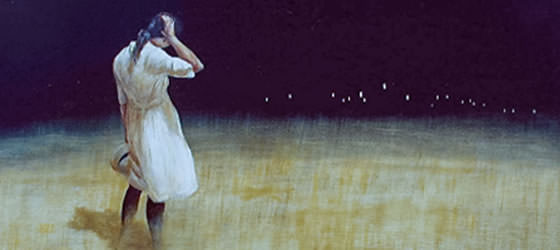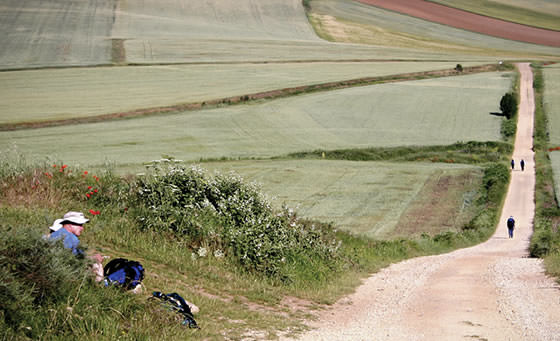Artist Martin Tighe is not much into self-promotion, happy to let his art do the talking. And there’s much to be said about his work, particularly his portraits and his most recent exhibition of bread paintings, which he calls religious icons.

Martin’s work has been lauded by respected art critics and his regular exhibitions allow a faithful following the chance to glimpse his work, which hangs in galleries and homes. There are also his sculptures, which are compelling, including a piece at Xavier College where Martin currently teaches and coaches rugby and where he and his sons were educated. It’s a bronze sculpture, named Victory and Defeat, and features three young men after a football game. The winner is in the background and the two losers are at the front, all grappling with their emotions after the game.
Then there’s the other string to his bow. The teacher, artist and sculpture is also a furniture maker, creating size-perfect reading desks for barristers from timber. He divides his time between school and his two outside workspaces—one for painting, the other for furniture making.
Bronze, wood and solid, hard, often tortured characters seem to characterise Martin’s work. It’s a point he’ll consider but not concede without further analysis, though his website says he ‘has built a career focusing on stories important to Australia’s culture and identity’.
Martin’s impressive folio of portraits is of mostly worthy characters, or men and women with something to say to the world, or about it. Ronald Ryan the last man executed in Australia in 1967 was the subject of a series of portraits Martin exhibited in 2006.


Martin, a self-taught artist, was only a child when Ronald Ryan was executed, but for eleven years he taught at Coburn High School, in the shadow of what was the infamous Pentridge Prison. On days when a north wind was blowing, he could hear the muffled announcements to prisoners. Later, after the prison had closed, and before it became a housing development, Martin took his father on a tour of the prison. It was a cold and hard bluestone environment and a place of much sorrow. This, and his own abhorrence of the death penalty, is captured in the Ryan series.
Then there are pensive and stark portraits of Tom Wills, Martin Flanagan, Ted Hill, John Martinkus and Ray Lawler. Sport plays a role in Martin’s work, but even leg spinner Shane Warne looks like a man deep in thought when Martin committed him to canvas.
Martin began painting at 30, and now, 20 years down the track, he continues to try to perfect his craft. Portraits are a good way of developing technical expertise and it is paying dividends. He has entered the Archibald Prize seven times and this year was a finalist with a portrait of ABC Classic FM presenter Emma Ayers, with whom he ‘shares’ his early morning work hours.
‘When I was teaching at Coburg I wrote a few plays that were performed by the students and that meant relying on a lot of people to make the play come to life. That was exasperating after a while because not everyone was reliable. At the time I was making furniture and had a lot of off cuts from the bandsaw so I made some shapes, first an apple, and began painting the shape. I have spent the past 20 years developing my technical skills’, Martin says.
Life and sustenance is implicit in Martin’s ‘Bread’ series, which was exhibited in Melbourne in September 2014. He began the series a year ago after entering a single bread painting in a a competition. There are 17 paintings in the series, though Martin prefers to call them religious icons.
‘The bread image appealed to me because bread can mean basic sustenance for someone as a food, or it can be deeply religious as in the Bread of Christ, and there’s everything in between. Certainly bread plays a major role in Catholic ritual.’ Martin says.
‘My thinking was that these paintings would be like religious icons, even though they might end up hanging in a kitchen, but the images are about much more than just a loaf of bread.’
Martin was raised a Catholic, teaches at a Catholic secondary school and agrees his faith enriches and informs his subject choices, though he is unsure how this process takes place. It is, he says, an interesting time for the Catholic Church, particularly in light of the terrible cases of child abuse by priests, that have emerged in recent years. He takes great satisfaction in seeing the great work done day after day by Catholic schools, hospitals and other organisations.
Certainly, his time at Xavier’s Burke Hall campus has inspired his next project—research into the German Jesuit Rupert Mayer. The Rupert Mayer Building at the Kew school triggered his curiosity and he is travelling to Munich to research more about the priest who died soon after the end of WWII.


Mayer was arrested in Germany in 1937 when Germans, critical of the Nazis, were not automatically executed. Instead, he was put under house arrest in a Benedictine monastery in Bavaria for the duration of the war. He was a decorated soldier from WWI, having lost a leg in his service of the German military.
‘His character was so unwavering in his self-belief in what was right and wrong. Munich was the birthplace of the Nazis and yet it was such a conspicuously Catholic place. This must have been heartbreaking for Rupert Mayer to see all the people seduced by the Nazi story and him swimming against the tide.
‘I am not sure what will happen yet. Something about the character has to almost call to be painted: Mayer isn’t there yet.’